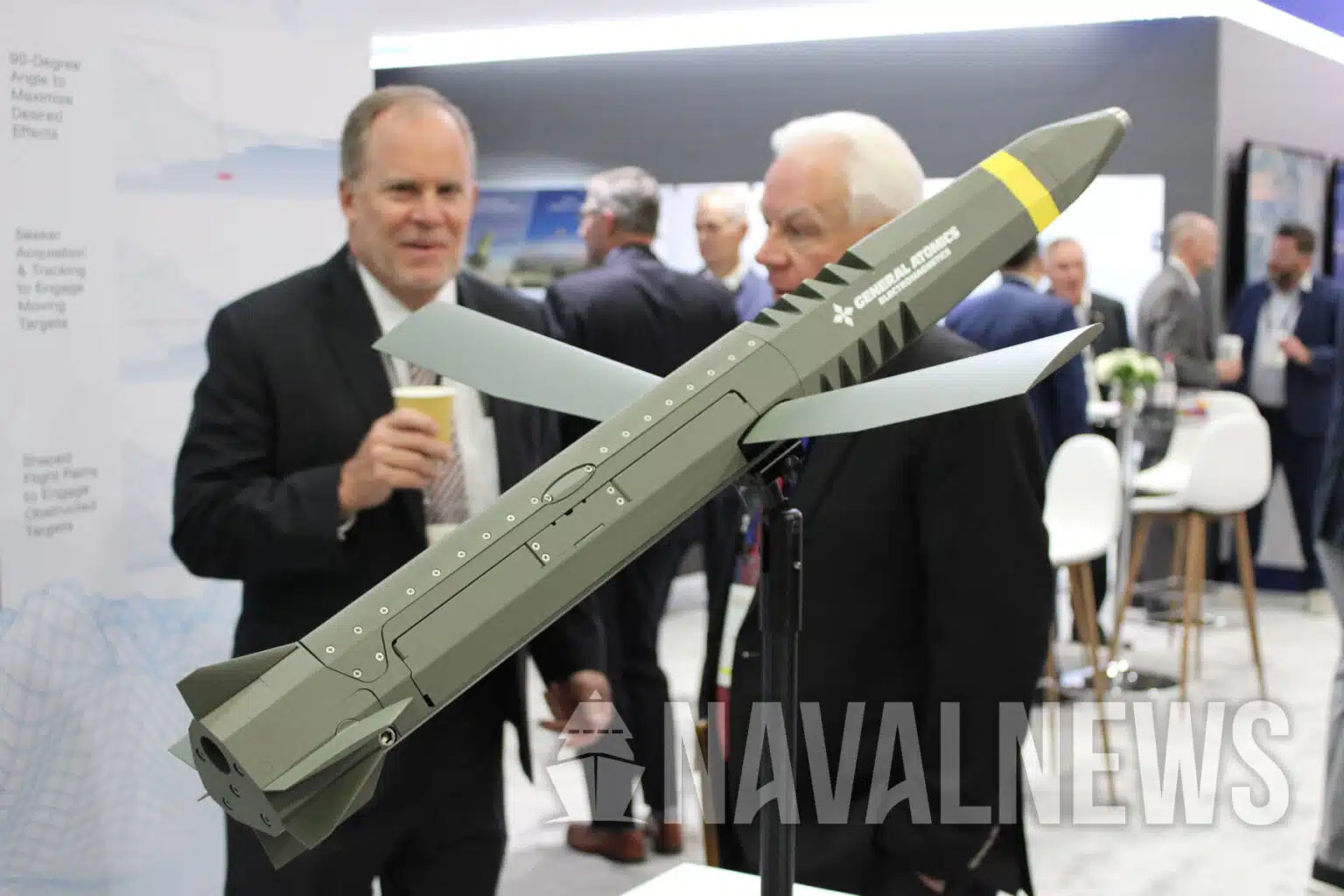General Atomics Wins U.S. Navy Contract for Advanced Long-Range Projectile
4 December, 2024 A 1:1 scale model of General Atomics' Long Range Maneuverable Missile (LRMP) at AUSA 2024. Photo by Carter Johnston General Atomics Electromagnetic Systems has been awarded a contract by the U.S.
Navy to develop and demonstrate a prototype 155mm Long Range Maneuvering Projectile (LRMP). GA-EMS announced this in a press release. It is reported that the contract was awarded through Advanced Technology International (ATI) under the Other Transaction Authority (OTA) program.
It is known that the LRMP project has been under development for the past three years and was first presented in April 2023.
 LRMP projectile. Source: General Atomics Electromagnetic Systems
LRMP projectile. Source: General Atomics Electromagnetic Systems
The projectile's electronics were borrowed from GA-EMS's hypersonic weapons and railgun programs. After launch, the projectile ascends to an apogee of 12 to 13.7 kilometers.
From this altitude, it transitions into a glide, maneuvering toward its target. The range of a projectile fired from a conventional 155-mm howitzer, including the M777, is expected to reach 120 to 150 kilometers.
To achieve maximum range, the projectile is launched in a high arc. Once it reaches its apex, it separates from the launcher, deploys its wings, and glides toward the designated coordinates. The new munition can perform complex maneuvers in the final part of the flight.
It can change course by 360 degrees to accurately engage complex targets in a static position and while moving. GA-EMS refused to use the global positioning system and decided to develop an optical navigation system instead.
 LRMP. Photo by Carter Johnston
LRMP. Photo by Carter Johnston
The newest LRMP model, presented at the AUSA 2024 exhibition, has two lenses on the body--one on the nose and the other oriented downward.
Despite the relatively small size of the projectile, the company claims that it will be equivalent to a 120-mm projectile in terms of destructive power.
The company aims to market the projectile both domestically in the United States and internationally, while seeking additional machinery to meet anticipated production demands.
It is expected that the company will be able to produce up to 100,000 of these shells per month.